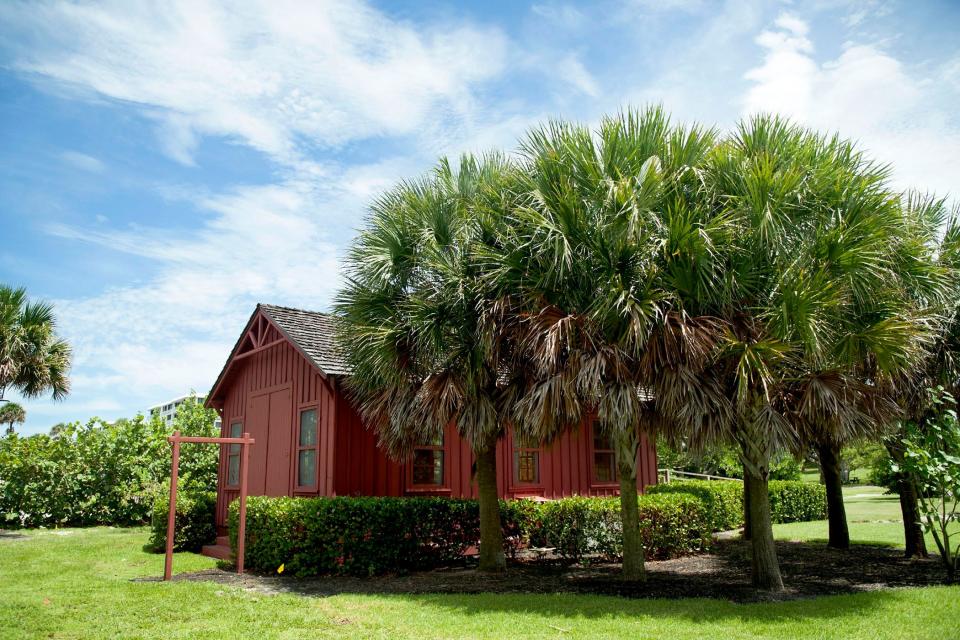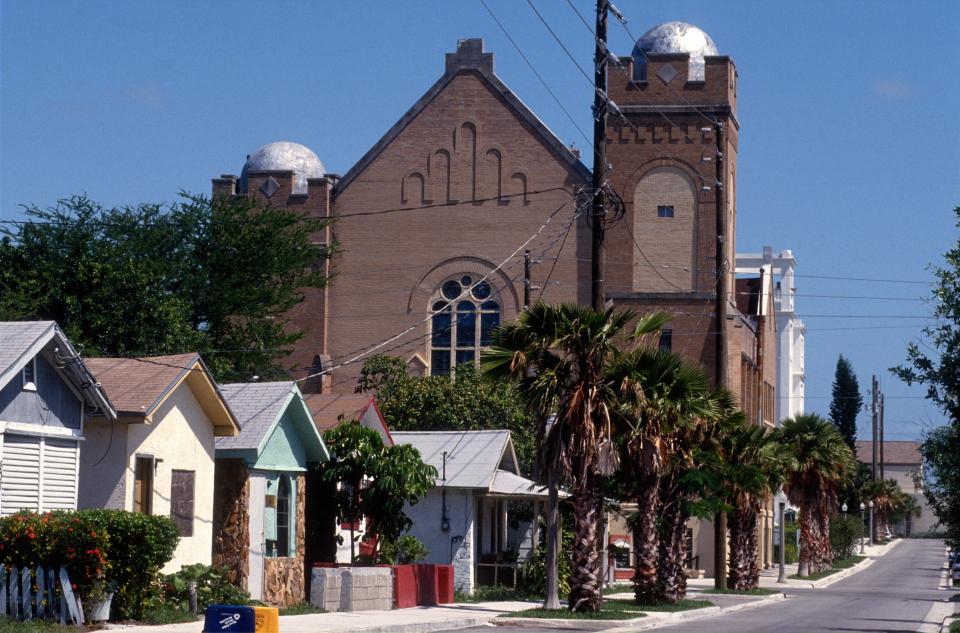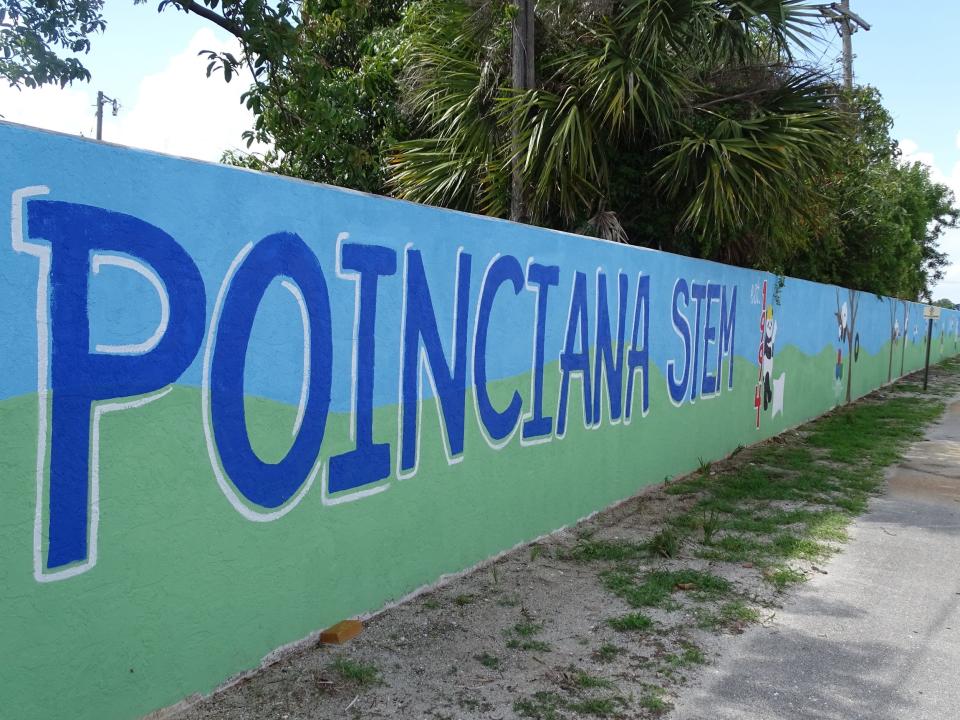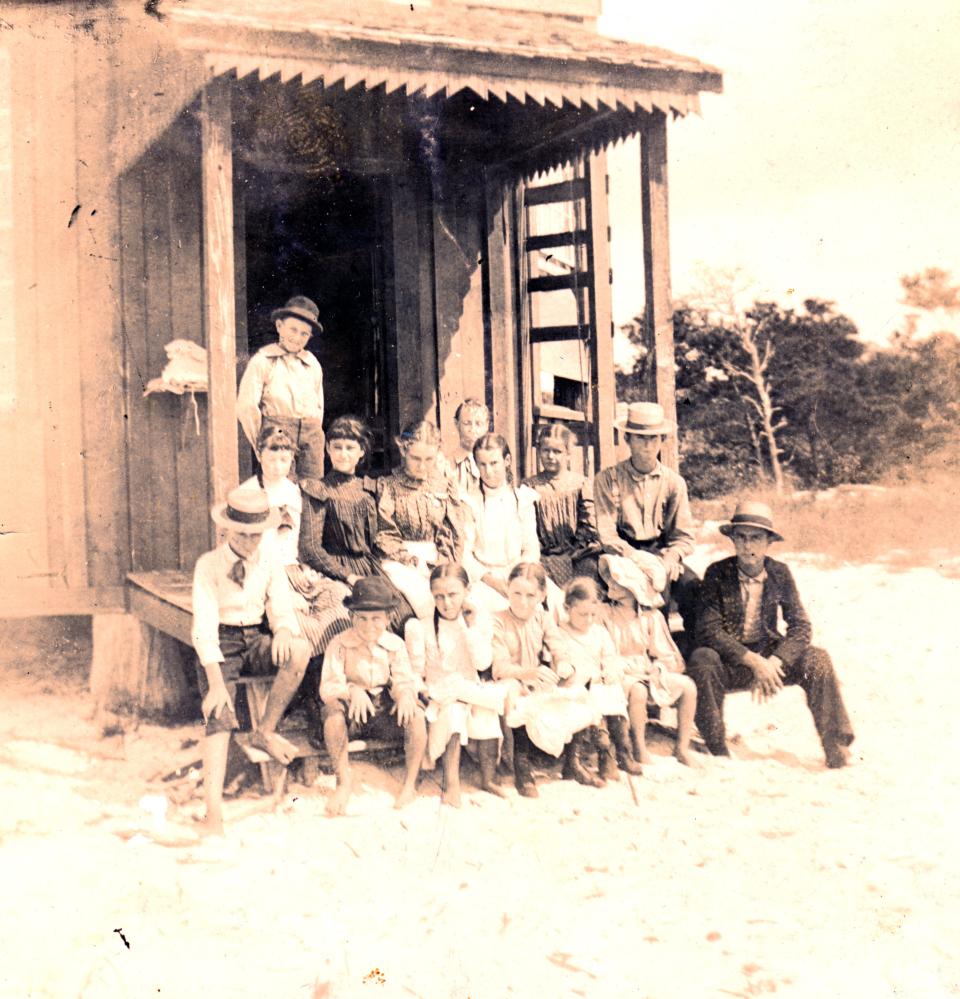Where were the first schools in Palm Beach County? What to know about the first 6
- Oops!Something went wrong.Please try again later.
Formalized education in Palm Beach County goes back 137 years to the area's first one-room schoolhouse in Palm Beach.
Since the schoolhouse's establishment in 1886, Palm Beach County has built more than 182 school campuses , and the population has grown from fewer than 250 people to 1.4 million residents.
Have you heard the names of Palm Beach County's first schools? Do you know where they're located?
Here are the first schools in Palm Beach County:
1886: Lake Worth/Palm Beach school became known as the 'Little Red Schoolhouse'
Location: One mile north of the Royal Poinciana Bridge on the Lake Trail in Palm Beach
Notes: A one-room building known as the Little Red Schoolhouse, the school was the first in southeast Florida, according to the Preservation Foundation of Palm Beach.
The school's first seven students were taught by Hattie Gale, the 16-year-old daughter of Elbridge Gale, a professor of horticulture at Kansas State Agriculture College who came to Florida to be a minister and botanist.
Open until: 1901. The schoolhouse was moved to Palm Beach's Phipps Park in 1960.

1893: Lantana School was short-lived before replacement
Location: East end of Lantana Road (then called Osborne Road) near the shore of Lake Worth lagoon.
Notes: The school operated for two years before residents in Hypoluxo went into the school's board meeting in 1895 to request a school of their own, according to Margaret Harris, daughter of a then-school board member who wrote the book "Pioneer Daughter" about the growth of the area.
The Hypoluxo residents' request for a school was originally denied because state law prohibited schools from being built fewer than 3 miles apart. In 1896, the board decided to build a new school and abandon the Lantana School.
Open until: 1908. The two-story Lantana Hypoluxo School replaced the Lantana school and was built in the mile-long stretch between the two post offices in the area, according to Harris.
1894: The Linton School was in what's now Old School Square
Location: Site of the present Old School Square in Delray Beach.
Notes: The school was later referred to as the Smith-Hughes Vocational School, the Delray Colored School and the Delray Training School.
The school opened the same year that West Palm Beach's first post office opened and Henry Flagler's Florida East Coast Railway to West Palm Beach was completed.
Open until: 1937 when it was moved to the site of Carver High School

1894: First school for Black students at Tabernacle Missionary Baptist Church
Location: West Palm Beach at the intersection of Clematis Street and Tamarind Avenue.
Notes: Also called the West Palm Beach School, the school's attendance on Oct. 1, 1894, was 74 students, according to the Historic Tabernacle Baptist Church's website.
Because of the sheer number of students attending school at the church, the schools superintendent arranged for two four-month terms for students. Half the students attended school for the first four-month term and the other half came to school for the second.
The church and school were west of was known as the "Styx," an area of Palm Beach where nearly 2,000 Black laborers lived while they were constructing Flagler's two hotels, the Royal Poinciana and The Breakers.
The "Styx" was in the area around the intersection of what is now Royal Poinciana Way and North County Road. Like other Black neighborhoods at the time, it lacked adequate services such as running water and electricity, according to the City of West Palm Beach's equality task force.
Open until: 1896 when the school was moved into its own building

1896: Poinciana Elementary School shares name with present-day STEM school
Location: Federal Highway just north of Boynton Beach Boulevard.
Notes: Boynton Beach's present-day Poinciana Elementary School shares a name with a historic school in the same neighborhood that was run by members of Greater St. Paul AME Church, the city's first church, according to the Boynton Beach Historical Society.
The one-room wooden schoolhouse opened to students the same year as the landmark Supreme Court decision in Plessy v. Ferguson, in which the "separate but equal" doctrine was applied to public education. Black students were forced to use subpar textbooks and supplies, and Black teachers were paid less than white teachers.
In South Florida, the school year was shortened for Black students, who had to work in the fields during winter harvest, according to the historical society.
Residents petitioned the school board to hire a teacher for the school and were rewarded with federal money in 1907.
Open until: 1910. The city built a new school for white students on the 100 block of Ocean Avenue. Poinciana moved to its current location on North Seacrest Boulevard and was modernized in 1996.

1898 and 1902: Octagon school in Jupiter, later consolidated
Location: Present-day Suni Sands on the south side of the Loxahatchee River between Clemons Street and Dubois Park
Notes: Children of lighthouse keepers in Jupiter's early days were homeschooled, but the first schoolhouse came in the form of an eight-sided structure on a half-acre lot that was donated to the cause. The building doubled as Jupiter's first church.
In 1902, the Dade County School Board agreed to consolidate the three white schools at Jupiter: the Octagon School in East Jupiter, the Neptune School at Sawfish Bay and the Barfield School in North Jupiter, according to the Loxahatchee River Historical Society.
Palm Beach County was formed from Dade County in 1909.
The Neptune School was expanded to two rooms for all of the students and a new water pump was built at the school. Following the consolidation, the Jupiter area did not have three public schools again until around 1976 with the opening of Jerry Thomas Elementary School.
Open until: 1902

Katherine Kokal is a journalist covering education at The Palm Beach Post. You can reach her at kkokal@pbpost.com. Help support our work. Subscribe today!
This article originally appeared on Palm Beach Post: 6 of the first schools in Palm Beach County for white, Black students

